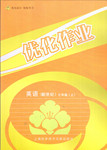题目内容
The Making of “Tipping Point”
Many of the most expensive commercials ever made are those in which a film star flashes a beautiful smile at the cameras. ___71___ Their recent television advertisement, the most expensive in British history, cost ten million pounds, and it features(突出), not the rich and famous, but villagers from the mountains of Argentina.
The advertisement features a game of dominoes. It begins in a darkened room with several thousand dominoes(多米诺) set up on a specially-designed table. Then the falling dominoes head out of the room into the streets, causing progressively larger objects to fall. Dominoes knock over books, which in turn knock bigger objects such as suitcases, tyres, and even cars. The final piece in the chain reaction is a huge tower of books. ___72___
The place chosen for the commercial was Iruya, a village high up in the mountains in Argentina. ___73___ The journey could take up to ten hours. Asked why this remote destination for the shoot, the director said that even though it was the most difficult location they could have picked, it was perfect.
___74___ Twenty six truckloads of objects were brought in. They were all chosen to suit the town and fit in with the people’s way of life. They included 10,000 books, 400 tyres, 45 wardrobes and 6 cars. Setting the objects up took skill and patience. Some of the sequences(场景) had to be reshot 15 times, though the sequence in which six cars fell over was successfully shot in just one take.
Filming in this location was not without its difficulties. Firstly, being so remote, it was hard to obtain resources. The second problem was the high altitude. Iruya is situated 3000 metres above sea level and the film crew was not used to working in such conditions. ___75___
Director Nicolai Fuglsig said: “Despite all the challenges, the cast was fantastic and it was a really amazing experience.” Whether or not the effort pays off is another matter entirely.
A. Creating this film was no easy task.
B. They drop off to show a glass of Guinness.
C. Preparations for filming took well over a month.
D. Not so with the famous Irish drink company Guinness.
E. They needed to be arranged so they would fall over easily.
F. It was also hard working with the villagers who had no experience of film-making.
G. The film crew had to drive along 48 kilometres of dirt roads and cross twelve rivers.
DBGAF

 培优三好生系列答案
培优三好生系列答案 优化作业上海科技文献出版社系列答案
优化作业上海科技文献出版社系列答案Louis Armstrong had two famous nicknames (绰号). Some people called him Bagamo. They said his mouth looked like a large bag. Musicians often called him Pops, as a sign of respect for his influence (影响) on the world of music .
Born in 1901 in New Orleans, he grew up poor, but lived among great musicians. Jazz was invented in the city a few years before his birth. Armstrong often said,” Jazz and I grew up together.”
Armstrong showed a great talent (天赋) for music when he was taught to play the cornet (短号) at a boy’s home. In his late teens, Armstrong began to live the life of a musician. He played in parades, clubs, and on the steamboats that traveled on the Mississippi River. At that time, New Orleans was famous for the new music of jazz and was home to many great musicians. Armstrong learned from the older musicians and soon became respected as their equal.
In 1922 he went to Chicago. There, the tale of Louis Armstrong began. From then until the end of his life, Armstrong was celebrated and loved wherever he went. Armstrong had no equal when it came to playing the American popular song.
His cornet playing had a deep humanity (仁爱) and warmth that caused many listeners to say, “Listening to Pops just makes you feel good all over.” He was the father of the jazz style (风格) and also one of the best-known and most admired people in the world. His death, on July 6, 1971, was headline news around the world.
【小题1】Armstrong was called Pops because he _______________.
| A.looked like a musician | B.traveled to play modern music |
| C.showed an interest in music | D.was a musician of much influence |
| A.by time | B.by examples | C.by space | D.by comparison |
| A.His tale began in New Orleans. |
| B.His music was popular with his listeners. |
| C.He was born before jazz was invented. |
| D.He learned popular music at a boy’s home. |
| A.The Father of the Jazz Style | B.The Making of a Musician |
| C.The Spread of Popular Music | D.The Invention of the Jazz Music |
The Making of a Surgeon
How does a doctor recognize the point in time when he is finally a “surgeon”? As my year as chief resident (进修医生) drew to a close, I asked myself this question 36 more than one occasion.
The answer, I concluded, was 37 .When you can say to yourself, “There is no surgical patient I cannot treat competently, treat just 38 or better than any other surgeon”-- then, and not until then, you are 39 a surgeon.I was 40 that point.
41 , for example, the emergency situations that we met almost every night.The first few months of the year I had 42 the ringing of the telephone.I knew it meant another critical decision to be 43 .Often, after I had told Walt or Larry what to do in a particular 44 , I'd have trouble getting back to sleep.I'd 45 all the facts of the case and, often, wonder 46 I had made a poor decision.More than once at two or three in the 47 , after lying awake for an hour, I’d get out of 48 , dress and drive to the hospital to see the patient myself.It was the only 49 I could find the 50 of mind I needed to relax.
Now, in the last month of my residency, 51 was no longer a problem.Sometimes I still couldn’t be sure of my decision, but I had learned to 52 this as a constant problem for a surgeon.I knew that with my knowledge and experience, any decision I'd made was bound to be a 53 one.It was a nice feeling.
This all sounds conceited (自负的) and I guess it is -- 54 a surgeon needs conceit.He needs it to encourage him in trying moments when he's bothered by the 55 and uncertainties that are part of the practice of medicine.He has to feel that he's as good as and probably better than any other surgeon in the world.Call it conceit -- call it self-confidence; whatever it was, I had it.
|
1. |
|
|
2. |
|
|
3. |
|
|
4. |
|
|
5. |
|
|
6. |
|
|
7. |
|
|
8. |
|
|
9. |
|
|
10. |
|
|
11. |
|
|
12. |
|
|
13. |
|
|
14. |
|
|
15. |
|
|
16. |
|
|
17. |
|
|
18. |
|
|
19. |
|
|
20. |
|